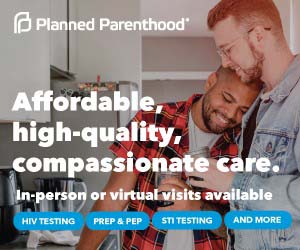As social media has proliferated in recent years, more and more gay men are turning to dating apps like Grindr and Scruff for personal connections, be they casual sexual encounters or more serious romantic possibilities.
But is a reliance on these apps helpful or hurtful to gay men’s long-term sexual and emotional health? This subject was the topic for vigorous discussion at a community meeting held last Sunday, Feb. 10 at Mixxia, a prominent salon in the Gayborhood.
Organized by Bret J. Nielson, a local therapist who specializes in sexual and relationship issues for gay men, the meeting drew an overflow crowd of mostly younger gay men who made it clear that the issues and problems of dating apps—and by extension dating for the modern gay man—are complex and myriad.
The discussion began with the basic question: “Are hook-up apps good?” The answers depended very much on whether each individual’s experience has been positive or not.
One participant (names are being withheld to protect privacy) expressed the point that apps are necessary these days because other social outlets to meet people, particularly bars, are no longer conducive to meeting prospective partners. “Bars have changed. People don’t talk to each other in bars anymore. Everyone’s on their cell phones cruising Grindr.”
Another aspect of the good apps contribute to socialization is that of accessibility. Said one man, “I consider [apps] to be an essential portal to my community. No matter when, I can reach out to members of my community, 24/7.”
But there is a flip side to that. “I think they contribute to disposable relationships,” another man countered. “You can be having an argument and you can pick up your phone and say ‘I don’t need this grief. I can find another boyfriend in no time, so why should I pick up my socks?’ So, rather than put in the effort to make a relationship work, someone can just walk out, get on Grindr and find the next one.”
Another issue that came up was the matter of addiction. Internet addiction has been a problem since the hoary days of AOL, but the advent of smart phones and the constant online presence they afford, particularly with the ubiquity social media, it has become an acute problem, especially among the young. There was general agreement when someone made the point “They don’t talk to people anymore. They’re so focused on their cell phones, their apps, their social media—all the time.”
Someone brought up the matter of safety, expressing a belief that cruising with apps was safer than picking up people in bars. “It’s dangerous out there,” he said. “At least on an app you can find out what you might be getting into.”
However, the moderator, Bret Nielson, made a cautionary point. “There is always risk. No matter how you do it, when you connect with a stranger, you run the risk of not getting home.”
The wide-ranging discussion continued for two hours. While no conclusions were ultimately reached, it was clear that the group was enthusiastic about having the chance to voice their concerns and experiences in a safe and supportive environment.
Nielson feels that the response to the meeting and ensuing discussion makes clear that there is a need in the community for greater opportunities for gay men to connect and communicate, to hash out these complex and personal issues. “Gay men need these intimate connections,” Nielson said. “Not just sexual or romantic connections, but communicative. I hope that this meeting can lead to some regular format where gay men can connect in this way. We just need to talk.”
